In order to achieve a complete image description we address the problem of representing object regions where regular interest point detectors do not detect features. As these regions are usually non-textured, stable re-localization in different images with conventional methods is not possible. Therefore, a technique is introduced which re-localizes once-detected NF-features using correspondences of regular features. Furthermore, a distinctive NF descriptor for non-textured regions is derived which has invariance towards affine transformations and changes in illumination. For the matching of NF descriptors, an approach is introduced that is based on local image statistics.
NF-features can be used complementary to all kinds of regular feature detection and description approaches that focus on textured regions, i.e. points, blobs or contours. Using SIFT, MSER, Hessian-Affine or SURF as regular detectors, we demonstrate that our approach is not only suitable for the description of non-textured areas but that precision and recall of the NF-features is significantly superior to those of regular features. In experiments with high variation of the perspective or image perturbation, at unchanged precision we achieve NF recall rates which are better by more than a factor of two compared to recall rates of regular features.
NF features are always complementary to regular features. In order to achieve this, NF features are iteratively located at the positions which are farthest to all regular features. The iteration is stopped when the distance to the regular features falls below a constant factor of the median nearest neighbor distance (mnn).
To describe the region between regular features, lines are sampled towards the nearest regular features. The samples describe the run from non-textured (NF location) towards the regular features.
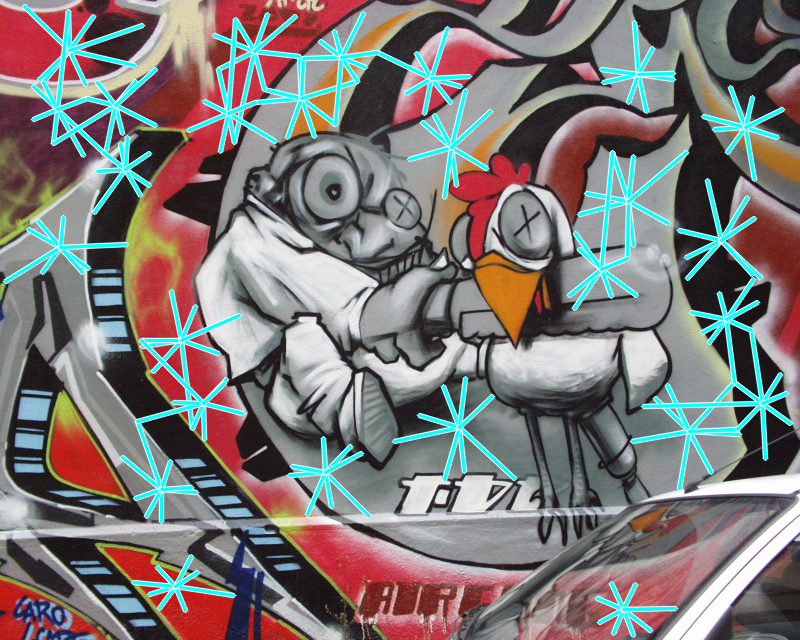
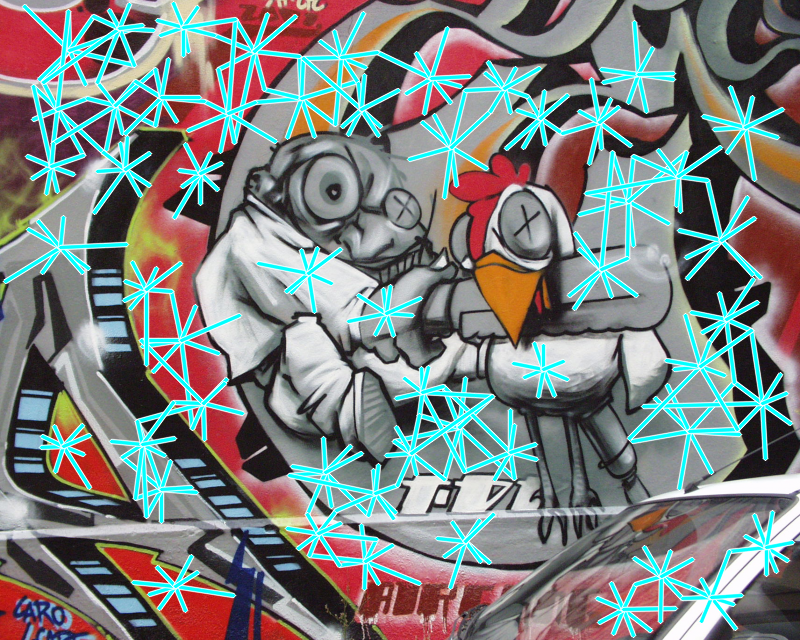
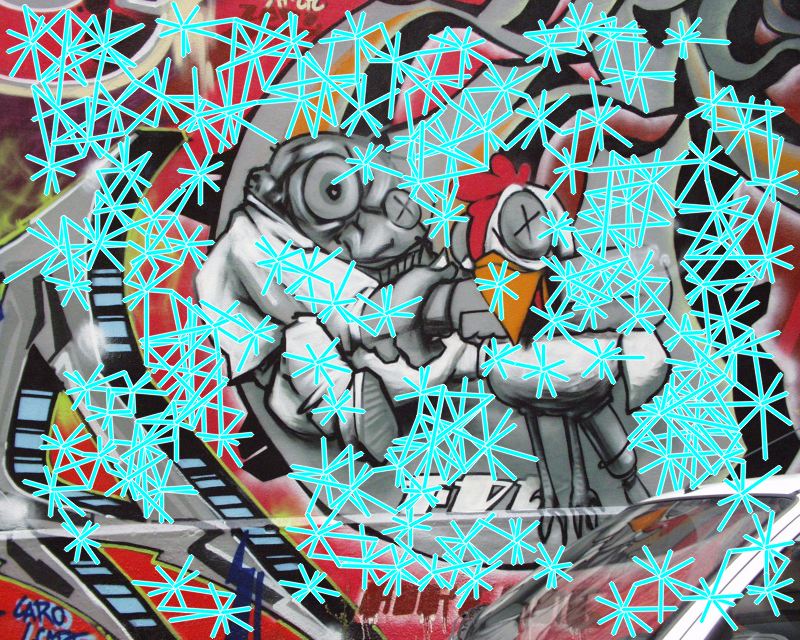
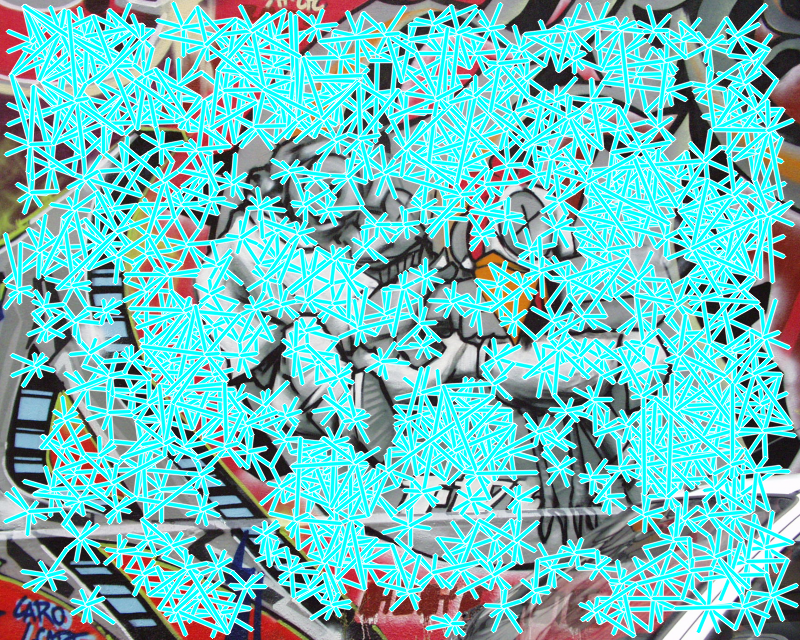
Images with increasing NF density (5mnn down to 2mnn)
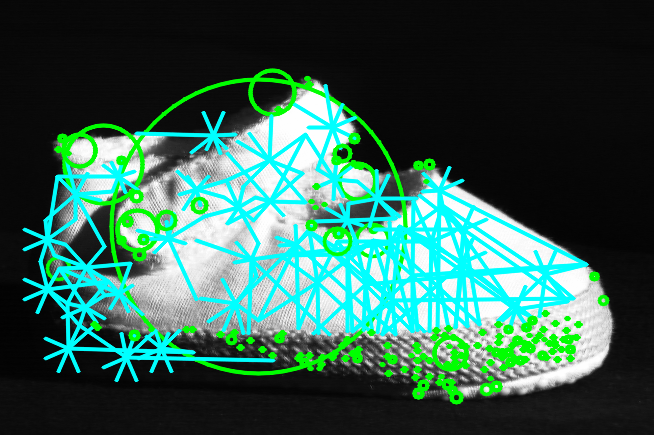
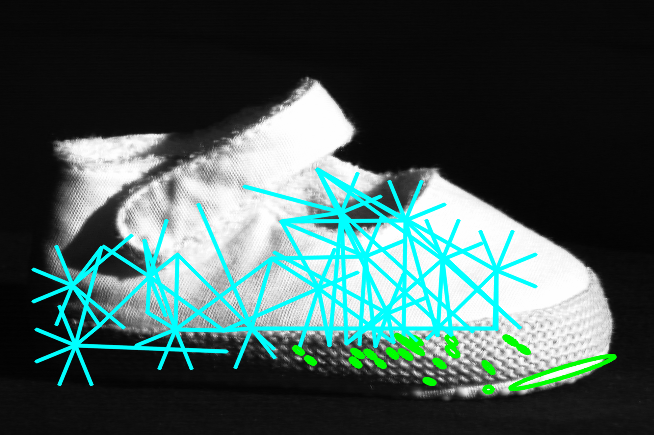
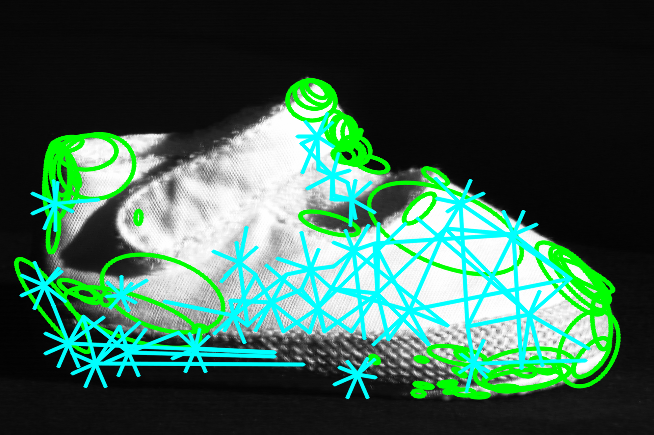
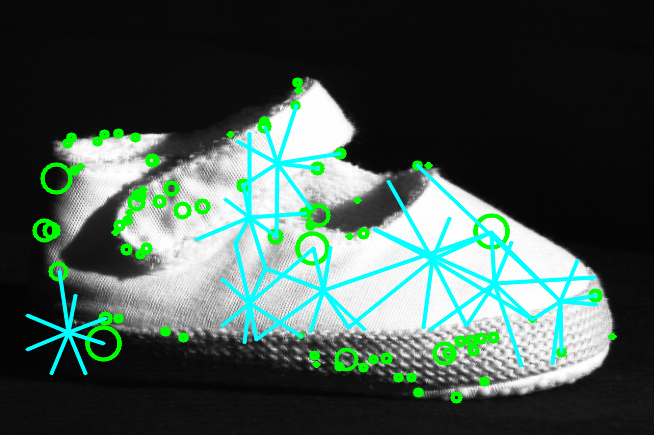
NF features (cyan) in combination with (green) SIFT, MSER, HAff and SURF.

Part of a matching between two images of the Grafiti sequence.

Matches between non-textured t-shirts in a cluttered environment. The correspondence lines are thinned out by a factor of 5.
For further evaluation, we provide linux binaries for describing and matching NF features with arbitary interest point/descriptor combinations. Download.